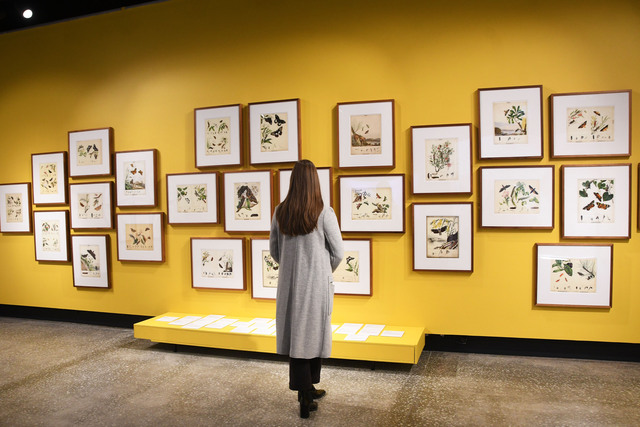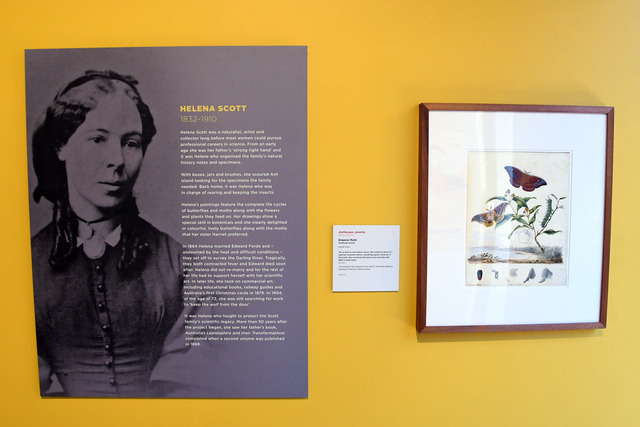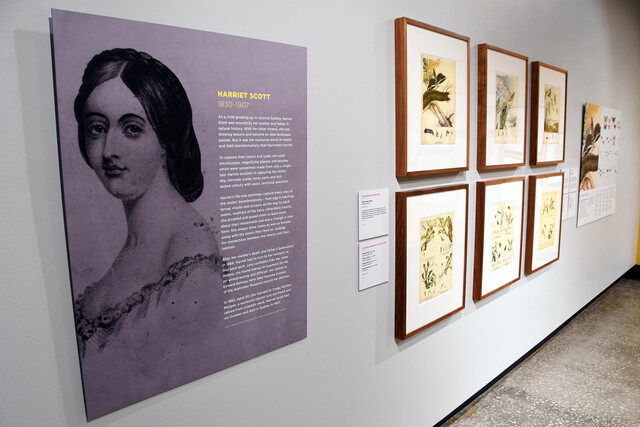
By Mikayla van Loon
The scientific prowess coupled with the beauty of detailed illustrations is what meets the viewer when visiting the Transformations: Art of the Scott Sisters exhibition.
Touring from the Australian Museum the collection of 39 reproductions of the Scott sisters’ studies of Lepidoptera, the works are now featured in the Box Gallery at the Yarra Ranges Regional Museum until 26 May.
The 19th century women, Helena and Harriet, museum curator Maddie Reece said “were very much women of their time” when it wasn’t deemed appropriate for women to undertake studies of this kind.
“Operating in early colonial New South Wales, where it wasn’t acceptable for women to have university degrees or professions, they came to this natural history illustration through their father who was an amateur naturalist,” she said.
Living, during their teenage years, on what was known as Ash Island, an island in the Hunter River estuary, the sisters learnt to collect and categorise caterpillars, moths and butterflies.
“Essentially they used type specimens as their first specimen and then every specimen is built off of that in a natural science perspective,” Reece said.
“In this Australian Museum collection there’s 30 of the first ever records of those species of moths, butterflies and caterpillars.”
Reece said what made the Scott sisters even more prolific for their time was their ability to collect caterpillars and larvae to document the growth throughout every stage of their development in natural habitats.
“So a lot of the plants you see illustrated are the plants that are natural to that habitat and they’re not just there for pretty decoration. They’re actually the specimens that these particular lepidoptera were feeding off. That’s what really sets them apart,” she said.
With the help of their father, a complete volume of Australian lepidoptera began in 1851 but would not be published until 1864 after reviews of the studies took place.
“What was really exciting about that is they actually let the girls put their names on it. So it’s the illustrations of Helena and Harriet Scott with notes by him [Alexander Walter Scott].”
A second volume, co-edited by Helena, was published with help of the Australian Museum between 1890 to 1898.
As the second touring exhibition to be shown this year, Reece said it was a pleasure to be able to bring works to the Yarra Ranges so people could appreciate collections without having to travel far distances.
“We’re really excited to present it here at the Museum. While they are specimens from New South Wales, it does speak to a really rich natural history of our region in the Yarra Ranges too because there are similarities.”
Despite the Scott sisters probably never intending for their scientific works to be presented as art, Reece said “compositionally, compared to some other artists that were working in the colony at that time…These are much more beautiful”.
“They’re really beautiful compositions but they were never intended to be artworks and so this is the lens that 170 years puts over something.
“So we see these beautiful pictures because we probably don’t have that science background.”
As women in a male dominated space, Reece said the Scott sisters were respected and renowned for their knowledge of lepidoptera.
The Australian Museum has the entire Scott collection totalling roughly 600 items, including illustrations and notebooks.
“These are reproductions. They’re high quality reproductions, they’re not the originals, and that’s because they’re so old and fragile they actually can’t tour.
“Institutions like the Australian Museum are doing stuff like this to make it more accessible to people, otherwise, they would just sit in collection storage rooms.”
Whether looking to learn more about butterflies and moths or to enjoy the beauty in the illustrations, Reece said “a show like this is it speaks across generations, everyone can find something to appreciate”.
The Yarra Ranges Regional Museum can be found on Castella Street Lilydale with its new opening hours of 10am to 4pm Wednesday to Sunday.








